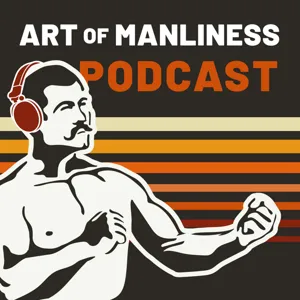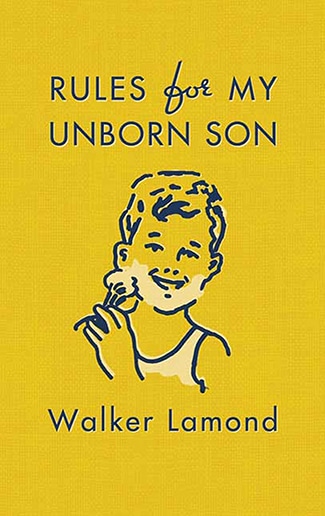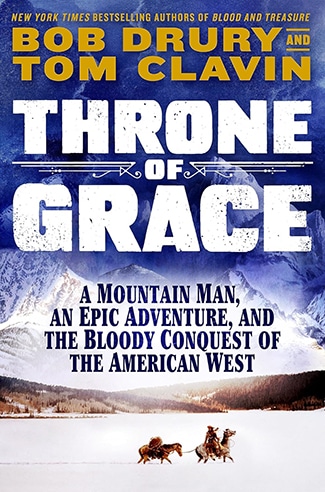Podcast Summary
The Importance of Nasal Breathing: Improving nasal breathing can lead to better health, including facial structure benefits and potential respiratory improvements. Focus on exhaling and increasing carbon dioxide intake for added benefits.
Our breathing patterns have a significant impact on our health, and improving our breathing, specifically by breathing through our noses, can lead to numerous benefits. James Nestor, an expert on breathing, shares his experience of paying thousands of dollars to have his nose plugged up to understand the importance of nasal breathing. He explains how breathing through our mouths instead of noses can lead to various health issues, including changing the shape of our faces and even exacerbating respiratory problems. By switching to nasal breathing, Nestor discovered significant health benefits, and he shares a simple trick to help make the transition at night. Additionally, focusing on exhaling and increasing carbon dioxide intake can also improve overall health. Nestor also explores advanced breathing techniques, such as hypoventilation training, which can help regulate the autonomic nervous system and potentially boost immunity and heal diseases. Overall, Nestor's research emphasizes the importance of paying attention to our breathing and making simple changes to improve our health.
Discovering the Harmful Effects of Mouth Breathing: Mouth breathing can lead to increased blood pressure, snoring, stress, and fatigue. Nasal breathing, on the other hand, improves oxygen absorption and reduces stress.
Mouth breathing, which has become common due to habit and environmental factors, can cause significant harm to health, including increased blood pressure, snoring, stress, and fatigue. This was discovered through a personal experiment where participants breathed only through their mouths for 10 days, recording their physiological data. The damaging effects were noticed within hours. Early cultures, such as the Native Americans, Hindus, and Chinese, intuitively understood the importance of nasal breathing and its benefits, which include improved oxygen absorption and reduced stress. Today, despite the known dangers of mouth breathing, many people continue to do it due to habit. The experiment's findings highlight the importance of making a conscious effort to breathe through the nose to promote better health.
Decrease in mouth size due to softer foods, leading to dental and breathing issues: Soft industrialized foods have led to smaller mouths, causing dental problems and breathing issues like sleep apnea and snoring during childhood, potentially altering facial structure.
The size of our mouths has decreased over the centuries due to a shift from chewing harder foods to processed, soft industrialized food. This lack of chewing early in life can lead to crooked teeth and breathing problems, including sleep apnea and snoring. The consequences of mouth breathing during childhood can even change the shape of one's face, resulting in a longer, droopier appearance. An intriguing experiment involving nasal plugs demonstrated the significant impact of nasal breathing on snoring, sleep apnea, blood pressure, athletic endurance, and heart rate variability. This simple change in breathing pattern can lead to remarkable health improvements.
Benefits of Nasal Breathing: Nasal breathing enhances oxygen intake, tones soft tissues, reduces snoring/sleep apnea, filters out particles, produces nitric oxide, and prevents sinusitis, bad breath, and periodontal disease. Practice daily and tape mouth at night.
Nasal breathing is more beneficial for our health than mouth breathing, despite common beliefs. Nasal breathing allows for better oxygen intake due to pressure and gas exchange in the lungs. It also helps in toning the soft tissues at the back of the airway, opening the airway and reducing snoring and sleep apnea. The nose acts as the first line of defense, filtering out particles and producing nitric oxide. Practicing nasal breathing during the day and using tape to keep the mouth closed at night can improve overall health and prevent issues like sinusitis, bad breath, and periodontal disease. It's important to note that chronic use of the mouth for breathing can lead to blocked nasal passages and make it harder to breathe through the nose.
Focus on proper exhalation for optimal health and sleep: By engaging our diaphragm during exhalation, we can improve oxygenation, sleep quality, and potentially alleviate conditions like sleep apnea. Imagine releasing a P during exhale to enhance diaphragmatic movement and breathe more efficiently.
Proper breathing through the nose, not just focusing on inhaling but also exhaling effectively, is crucial for optimal health and sleep. Our species, as humans, have evolved with face structures that make us the worst breathers in the animal kingdom. By focusing on nasal breathing and proper diaphragmatic movement during exhalation, we can improve oxygenation, sleep quality, and even potentially alleviate conditions like sleep apnea. Research shows that the exhalation phase is just as important as inhalation, and neglecting it can lead to various health issues. By consciously engaging our diaphragm during breathing, we can access more of our lungs, breathe more efficiently, and reap numerous benefits. A simple yet effective practice to enhance exhalation is to imagine you're holding a P and releasing it during exhale, which can help increase diaphragmatic movement and improve the overall breathing cycle.
Maintaining CO2 balance for optimal health: Slow, efficient breathing helps maintain CO2 balance for optimal health, leading to better oxygen utilization and improved performance.
While we often focus on getting enough oxygen through breathing, it's equally important to maintain a balance of CO2 and oxygen in the body for optimal health. Ordinary, healthy individuals typically have sufficient oxygen, but often lack enough CO2 for the oxygen to effectively reach cells. This can lead to symptoms like dizziness, cold fingers, and decreased performance. To maintain an appropriate CO2 level, focus on breathing slowly and efficiently, allowing your body to naturally offload CO2 while meeting your metabolic needs. For more advanced practices, consider techniques like controlled breathing exercises that elevate CO2 levels, but start with normal, slow breathing first.
Breathing Training: Improve Circulation, Oxygenation, and Experience Psychedelic Sensations: Breathing training, specifically hypoventilation, can enhance circulation, oxygenation, and lead to psychedelic sensations. Beneficial for asthmatics and those with poor breathing habits.
Controlling your breathing, specifically practicing hypoventilation training, can have numerous benefits for your body. By increasing your tolerance for higher CO2 levels, you can improve circulation, oxygenation, and even experience psychedelic sensations. This training can be particularly helpful for individuals with asthma, as they often breathe more than necessary and expose themselves to more environmental pollutants. By teaching them to breathe normally and in line with their metabolic needs, significant improvements can be made. Additionally, the mouth plays a crucial role in breathing, and modern lifestyle habits such as eating soft foods and mouth breathing can negatively impact nasal passages and tooth alignment. While it may be more challenging to reverse these issues in adulthood, proper habits and practices during youth can significantly benefit airway health. Overall, the connection between breathing and overall health is a fascinating area of research, with potential applications for various health conditions.
Exploring the art and science of breathing: Improve your health and wellbeing by mastering the basics of nasal breathing and slow exhaling, while also exploring advanced practices like the Wim Hof Method for enhanced potential and healing.
Our breathing plays a significant role in our overall health and wellbeing, and there are various techniques to improve it, from simple nose breathing and slow exhaling to more advanced practices that require concentrated effort. The author of "Breath: The New Science of a Lost Art" emphasizes the importance of starting with the basics, such as nasal breathing and exhaling slowly, which have a solid scientific foundation. However, he also explores the fringes of breathing, like the Wim Hof Method, which allows people to control their autonomic nervous system and immune function. These advanced practices have been used for thousands of years by various cultures and have shown promising results in healing chronic conditions and enhancing human potential. Overall, the book emphasizes that everyone can benefit from improving their breathing, regardless of their current health status.
Breathing: A Powerful Tool for Healing and Optimizing Health: Breathing practices can regulate the nervous system, decrease inflammation, and increase circulation to various organs, leading to significant improvements or even cures for some people, especially those with autoimmune diseases. The exact mechanisms behind these benefits are still being studied.
Certain people, including those with autoimmune diseases, have reported significant improvements or even cures through practices focused on controlled breathing. These claims have been backed up by scientific studies and measurements. For instance, individuals like Swami Rama have demonstrated remarkable control over their heartbeats and blood flow. Breathing helps regulate the nervous system, leading to decreased inflammation and increased circulation to various organs. This physiological response is not a placebo effect but a proven method to promote healing and maintain balance within the body. However, the exact mechanisms behind how breathing can lead to temperature regulation and other extraordinary feats, such as not suffering from hypothermia during ice baths, remain mysteries that scientists are actively investigating. Overall, the potential of controlled breathing as a powerful tool for healing and optimizing health is only beginning to be understood.
Exploring advanced breathing techniques for healing: Advanced breathing techniques like Sudarshan Kriya and Wim Hof method can increase flexibility, resilience, and help alleviate anxiety. Despite initial discomfort, benefits outweigh it. Check out James Nestor's book 'Breath' for more info.
Advanced breathing techniques, such as Sudarshan Kriya and Wim Hof method, can have profound healing effects on the body. These techniques can make you more flexible, resilient, and even help alleviate chronic anxiety and fear-based problems. The author, James Nestor, has personally tried these methods and seen the science behind them. He also mentions ongoing research using CO2 therapy to help people with chronic anxiety. Although these techniques may initially feel uncomfortable or even frightening, the benefits can outweigh the initial discomfort. For more information, check out James Nestor's book "Breath: The New Science of a Lost Art," available on Amazon.com and his website, mrjamesnester.com. You can also find more resources and deeper exploration of this topic on our show at AOM.IS/breath.
Apply what you've learned in daily life: Sign up for Stitcher Premium for ad-free listening, apply lessons from podcast to daily life, and share or leave a review to support the show.
Brett McKay encourages listeners to not only listen to the podcast but also apply what they've learned in their daily lives. To make the listening experience ad-free and more convenient, Brett suggests signing up for Stitcher Premium using the code "manliness" for a free month trial. After downloading the Stitcher app, listeners can enjoy ad-free episodes of A1 Podcast. Lastly, Brett expresses gratitude for the support of the listeners and asks for reviews and shares to help spread the word. Keep in mind, the true value comes from implementing the lessons shared in the podcast.













